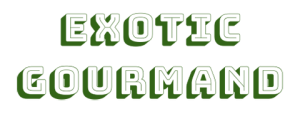The barrel cactus fruit grows on various barrel cacti species native to North and South American deserts. It is typically small and has a hard, prickly covering that shields the delicious pulp and seeds.
Table of Contents
What is a Barrel Cactus Fruit?
The edible barrel cactus fruit, also called the fishhook barrel cactus fruit or compass barrel (Ferocactus wislizeni), belongs to the Cactaceae family. It is produced by several species native to the deserts of Arizona, Texas, California, New Mexico, and Northern Mexico.
The fruit is usually tiny, barrel-shaped, and has thorns or spines that must be removed before eating. When ripe, the fruit can be red, yellow, or brown. Its pulp is sweet and juicy and has a mildly tangy flavor similar to a cross between cucumber and watermelon.
It has tiny, shiny black seeds and water that is full of oxalic acid. The presence of oxalic acid causes diarrhea which the Seri Indians experienced when they drank it during drought.
Even though it is not frequently grown, this desert plant has long been a vital source of sustenance for the ingenious local population. It is among edible cactus plants, including the prickly pear, saguaro, cholla, and dragon fruit.
The History of Barrel Cactus Fruit
The barrel cactus fruit is thought to have originated in Mexico and was a staple diet for native peoples. They would manually gather the fruit, remove the spines, and roast or dry it in the sun. The dried fruit could be kept for a very long time and was used as a food source during times of scarcity.
The barrel cactus fruit rose to prominence as a major export in the 16th century with the entrance of Spanish conquistadors. It was highly regarded for its therapeutic powers and sweet, tangy flavor. The fruit was shipped to Europe, where it was used as a sweetener and a treatment for several illnesses.
Many native communities still harvest and utilize the fruit according to long-standing customs, and it continues to be a significant cultural symbol for them. Festivals and other cultural activities are held throughout the region to commemorate it.

What Does a Barrel Cactus Fruit Taste Like?
Raw barrel cactus fruit has a sweet, tangy flavor. When cooked, the texture softens, and the taste takes on a fig- or date-like quality.
How to Tell When Barrel Cactus Fruit is Ripe
If you’re ever looking to purchase or harvest barrel cactus fruit of your own, it’s essential to know when the fruit is at its ripest to ensure the best eating experience. Here’s what you need to look for when picking out cactus fruit!
| Color | A barrel cactus’ fruit begins as green and ripens to yellow or red. The yellow fruit will have a vivid, bright hue when fully ripe. |
| Texture | Mature barrel cactus fruit will feel supple and gently yield when touched. |
| Scent | Mature barrel cactus has a pleasant and fruity aroma. If you find the smell unpleasant, definitely the fruit is spoiled. |
| Firmness | The fruit should still be somewhat firm despite being soft. Fruit that feels mushy or too soft may be overripe and past its peak. |
Look for firm, plump fruits that have a brilliant color when buying barrel cactus fruit. Fruits with soft areas, wrinkles, or discoloration should not be considered since they may be rotten or overripe. Additionally, be cautious when handling the fruit because it has tiny, sharp spines all over it.
Can I Eat Raw Barrel Cactus Fruit?
Yes, you can eat raw barrel cactus after removing the spines. The uncooked fruit can also be used in various ways, like making jams, syrups, and jellies or in cocktails, salads, and smoothies.
Cooking with Barrel Cactus Fruit
Here is how to prepare barrel cactus fruit:
- Cut off the fruit’s ends with a sharp knife, then slice through the skin lengthwise, careful not to sever the pulp too deeply.
- Remove any remaining spines or thorns before carefully peeling off the skin. Some people handle the fruit wearing gloves to protect themselves.
- Slice or cut the fruit as desired after rinsing it in cold water to remove any remaining syrup or stickiness.

Here are dishes that incorporate this Southwest staple
Barrel Cactus Fruit Candy: The ingredients for this candy are: sugar, water, lemon juice, orange peel, and boiled barrel cactus.
Lemon Barrel Cactus Cake: Ingredients include candied barrel cactus slices, lemon, all-purpose flour, eggs, yogurt, sugar, turmeric, barrel cactus seeds, and baking powder.
Desert Stew: Goat meat stew with onions, barrel cactus buds, and herbs.
How to Store Barrel Cactus Fruit
Pick barrel cactus fruit when ripe and keep them in a cool, dry place. If you don’t plan on consuming them immediately, you can refrigerate them for two weeks.
Freezing can prolong shelf life to 6 months. After dehydrating, you can store the fruit in an airtight container for a year. Proper storage helps maintain the flavor and quality of the fruit.
Nutritional Benefits of Barrel Cactus Fruit
The barrel cactus fruit is a nutritious supplement to one’s diet because it is high in vitamin C, calcium, and iron. Calcium is necessary for healthy bones, while iron keeps the blood cells in check.
Vitamin C supports wound healing and immune function. The fruit also has antioxidants, which can help shield the body from oxidative stress and lower the risk of developing chronic illnesses like cancer and heart disease.
Where to Purchase Barrel Cactus Fruit
You can buy barrel cactus fruit at farmers’ markets and specialty stores around areas that cultivate them. The fruit often becomes accessible in late spring or early summer, with June and July seeing the highest levels of availability.
It’s crucial to remember this fruit is a wild food source, so only people who know and respect the ecology should harvest it.

